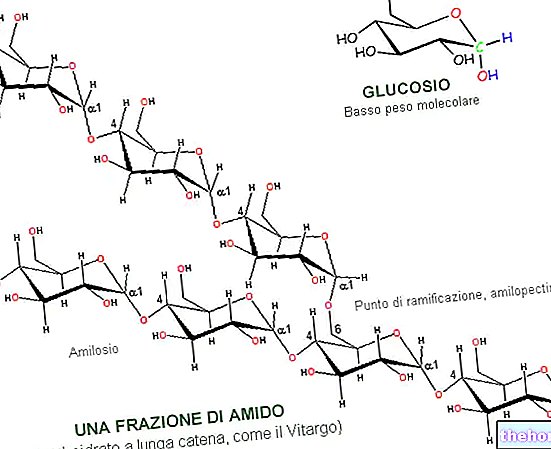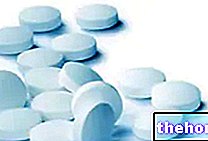Kava Kava: What is it?
Kava Kava is the name given to the underground parts (roots and rhizome) of Piper methysticum Forst., An upright shrub of about 3 meters, cultivated in the regions of Polynesia and Oceania. Belonging to the family of Piperaceae, the same as the pepper present on our tables (Piper nigrum), the plant owes its name to Piper, which in Latin means pepper, and a methysticum (which intoxicates).

Properties of Kava - Kava
Kava - Kava has anxiolytic, sedative, hypnotic, anticonvulsant, muscle relaxant and local anesthetic properties (the aqueous extracts reduce the sensitivity of the mucous membranes of the mouth). All of these properties are extensively documented in the literature, and have also been demonstrated in double-blind studies, meta-analyzes and systematic reviews. From these studies it emerges that the anxiolytic-sedative properties of kava kava are attributable to active ingredients renamed kavalactones or kavapirones, such as kavain (1-2% of the drug), dihydrokavain (0.6-1%), methyskin (1.2 -2%) and dihydromethisticin (0.5-0.8%). The same active ingredients are used to standardize commercially available kava kava extracts, which should contain at least 3.5% kavapirones, calculated as kavain. Often, however, much higher concentrations are reached, in the order of 30-60%, for a total of 60-150 mg of kavalactones per tablet. What is very interesting is that the sedative properties of kava kava seem to be separated from any side effects. central level; the extracts, in fact, do not seem to give addiction, physical and psychological dependence, nor do they cause a reduction in memory or reaction time; on the other hand, they exhibit a "therapeutic efficacy comparable to conventional drugs (benzodiazepines). These characteristics prompted the German E commission to recommend kava kava in the treatment of nervous anxiety, states of excessive tension and insomnia. The extracts of kava kava can also be of help to combat stress and rebalance the emotional sphere and mood in the presence of nervousness and internal conflicts within the couple. Not surprisingly, researchers have shown that these extracts increase the activity of a brain neurotransmitter, called GABA, which contributes to a sense of relaxation.
Safety and side effects
From the examination of the literature available to date, it emerges that the use of kava kava is associated with a low incidence of side effects. At therapeutic dosages, the use of the drug seems risk-free, except for a percentage between 1 , 5 and 2.5% of patients, in whom the intake of kava kava causes allergic reactions, gastrointestinal problems, headache or dizziness. On the other hand, the chronic abuse of kava kava (dosages higher than therapeutic ones for long periods) can induce severe side effects on the skin, eyes, liver and heart. The use of Kava Kava preparations should not exceed the three months.
It is also important to remember that the soothing action of Kava Kava is enhanced by the simultaneous intake of alcohol, which is why it is contraindicated even in small doses.
For some years now, the marketing of Kava Kava extracts in the form of supplements has been banned in Italy, in the wake of reports, mostly from Switzerland and Germany, about possible hepatotoxic effects of the drug. This risk could be due to the "congenital absence, recorded in particular population groups, of enzymes responsible for the metabolism of some drug components, to the presence of sophistication with aerial parts of the plant, or to the use of kava kava extracts containing high concentrations of kavalactones, but low in glutathione. This tripeptide, whose integration occurs in the form of acetyl-cysteine, plays a crucial role in the hepatic detoxification processes of various substances, including drugs such as paracetamol; the reduced availability of glutathione, consequent to the increased metabolism of these substances, can induce even quite serious liver damage. Once again it is fascinating to note how in the plant Piper methysticum glutathione and kavalactones are found in a ratio close to 1: 1, a ratio that moves considerably in favor of kavalactones in some ethanolic or acetone extracts of kava kava; the phytocomplex, that is the rich mine of substances present in a plant source, once again demonstrates a more balanced and safe action than the single active ingredients that can be isolated. of liver diseases, it could therefore be useful - under medical advice - the simultaneous integration of acetyl-cysteine.
Select plant Fir Acacia Acerola Sorrel Yarrow Yarrow Yarrow Aconito Adatoda Garlic Agnocasto Agrimonia Alchemilla Alkekengi Aloe Altea Witch Hazel Ammi or Visnaga Pineapple Andrographis Anemone Pulsatilla Angelica Anise Star Anise Japanese Star Anise Bitter Orange Bitter Areca Arnica Harpagophytum Arpagophyte Artemisia Asteragus Basil Asparagus Asparagus Peruvian Asparagus Asparagus Asparagus Hawthorn Boldo Borage Shepherd's Purse Boswellia Bucco Butea superba Cocoa Coffee Cajeput Calamus Calamus Marigold Camedrio Chamomile Roman Chamomile Camphor Cinnamon Ceylon Maidenhair Capuchin Artichoke Cardamom Cardiac Thistle Asian Thistle Carvi Cascara Cassia Catecu Catha Cabbage Celandine Chicory Centaurea Cinnamon Cypress Celandine Chives Cypress Coca Cola Colchico Combreto Condurango Comfrey Coriander Cranberry Barberry American Chrysanthemum Cumin Turmeric Damiana Digital Dioscorea Drosera Dulcamara Dunalilella Echinacea Eder a Ephedra Elenio Eleutherococcus Helichrysum Evening primrose Horsetail Alfalfa Erica Euphrasia Erisimo Escolzia Eucalyptus Farfara Farfaraccio Calabar bean Fenugreek Fennel Phytolacca Frangola Ash Fumaria Japanese Mushrooms Galega Ganoderma lucidum Garcinia Cambogia Mulberry Gentian Broom Ginkgo Ginkgo Guipana Guipana Gynestra Ginkgo Hibelia Gymnasium Hibiscus Guarulp St. John's Wort Horse Chestnut Ispaghul Hyssop Jaborandi Kava kava Konjac Laminaria Cherry Laurel Lavender Lemongrass Lespedeza Lovage Icelandic Lichen Lemon Flax Lippia Licorice Lobelia Hops Maca Marjoram Maize Mallow Manna Marrubio Marrubio d "water Matè Melaleuca Meliloto American Lemon balm Myrtle Myrama Walnut Nutmeg Walnut vomica Olive tree Meadowsweet Ononide Opuntia Oregano Orthosiphon Nettle Poppy Papaya Parietaria Feverfew Passiflora Chilli Perilla Periwinkle Phyllanthus Plantain Picrorhiza Pilosella Pino Pisci dia Podofillo Polygala Grapefruit Parsley Psyllium Pueraria mirifica Butcher's broom Pygeum Quassia Oak Rhubarb Ratania Rauwolfia currant Castor bean Rhodiola Rosehip Rosemary Rue Willow Sarsaparilla Sage Elderberry Sassafras Sedum Ergot Senna Serenoa Repens Soybean Solidago Tansy Taraxus Tamarind Tamarind Tamarind Tamarind Tamarindo Ursina Valerian Vanilla Mullein Verbena Veronica Viburnum Vinca Pansy Mistletoe Vine Withania Yohimbe Saffron Ginger Pumpkin Select disease Juvenile Acne Rosacea Tinnitus Tinnitus Aerophagia Tendon Affections Afonia Aphthae Algias Functional Halitosis Breastfeeding Allergy Anemia Anguish Anxiety Arteriosclerosis Asthrosis Asthrosis Arthritis Arthritis Men Sex Woman Blepharitis and Conjunctivitis Eye bags Bronchitis Gallstones Kidney stones Salivary stones Baldness Androgenetic Candida Fragile hair Caries Headache Cellulitis Motion sickness Cystitis C limaterio Cholecystopathy High cholesterol Ulcerative colitis Colonoscopy Contusions Hematoma Convalescence Couperose Depression Dermatitis Diaper dermatitis Diabetes Diarrhea Erectile dysfunction Dyslipidemia Dysmenorrhea Dyspepsia Disturbances of vision Hemorrhoids Epistaxis Herethism Heart disease Fever Fibromyalgia Gastro-intestinal disease Flatulence Hypertension Fibromyalgia Gastrointomnia Jaundice Laryngitis Renal lithiasis Toothache Sore throat Thinness Menopause Meteorism Mononucleosis Alzheimer's disease Crohn's disease Nausea Vomiting Obesity Dark circles Onychomycosis Osteoporosis Dry skin Periarthritis Piorea Low pressure Prostatitis Psoriasis Colds Breast fissures Anal fissures Gastro-nasal rhinitis Senescence Premenstrual Syndrome Sinusitis Quit smoking Overweight Fatty liver Constipation Stomatitis Stress Cough Triglycerides high Ulcer Burns Nails Brittle flashes Heat Warts Dizziness Properties herbal Tanning Abortive adaptogenic Aphrodisiac bittering analgesic anesthetic anorectics analgesic antacid anti-allergic anti-asthmatic Antibiotic catarrh Anticellulitiche anticonvulsant Antidiaforetiche antidiarrheal edematous anthelmintic antiemetic Antiemorroidarie antiphlogistic Antiidrotiche Antinevrotiche Antioxidants antipyretic antirheumatic antiscorbutic Antiseptic antispasmodic anti-uric Aperitive Flavoring Astringent Balsamic Bechiche Capillarotrope Cardiotonic Carminative Cathartic Caustics Healing Cholagogues Choleretic Dyes Decongestants Deodorants Purifying Diaphoretic Cleansers Disinfectants Detoxifiers Thirst quenching Diuretics Exciting Emetics Emmenagogues Emollients Hemostatic Energies Hepatoprotectors Expectorants Eupepticus Moisturisers Galactosensitizers lanti Hypertensive Hypnotic Hypoglycemic Hypotensive Irritants Laxatives Soothing Narcotic Nerves Nutrients Odontalgic Pectoral Purgative Revulsive Remineralizing Refreshing Rubefacient Scialagoghe Sedative Soporifugas Sneezing Stomachic Stomatics Narcotic Vascular Tightenitis
















.jpg)











